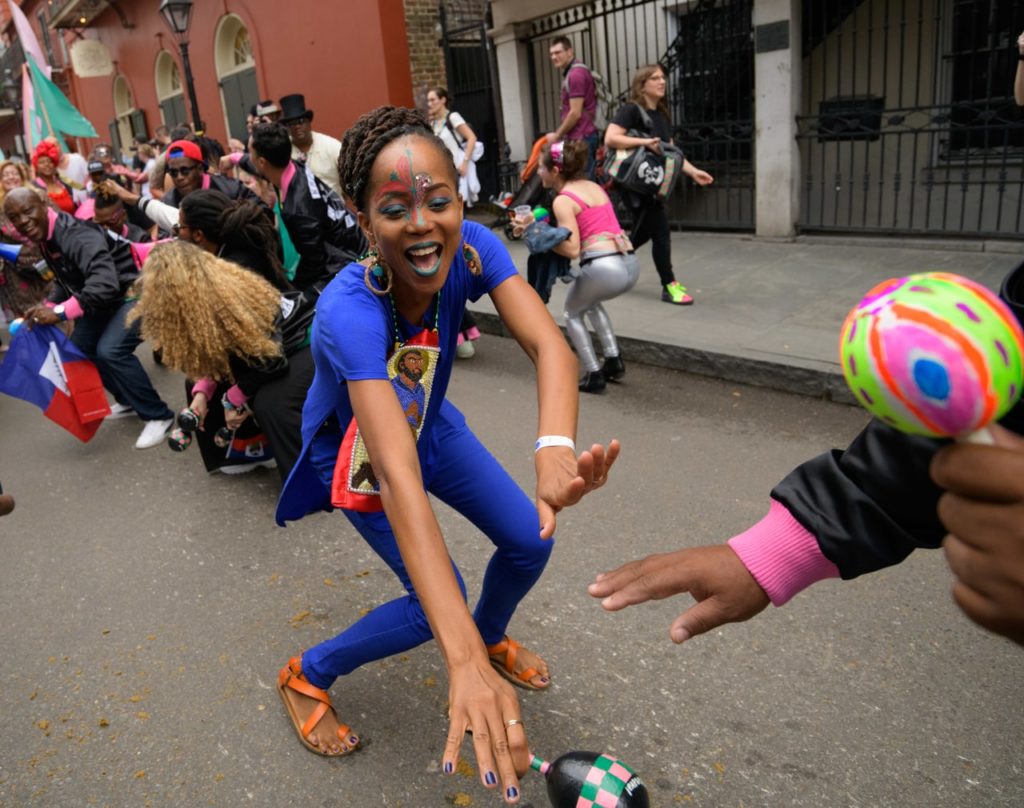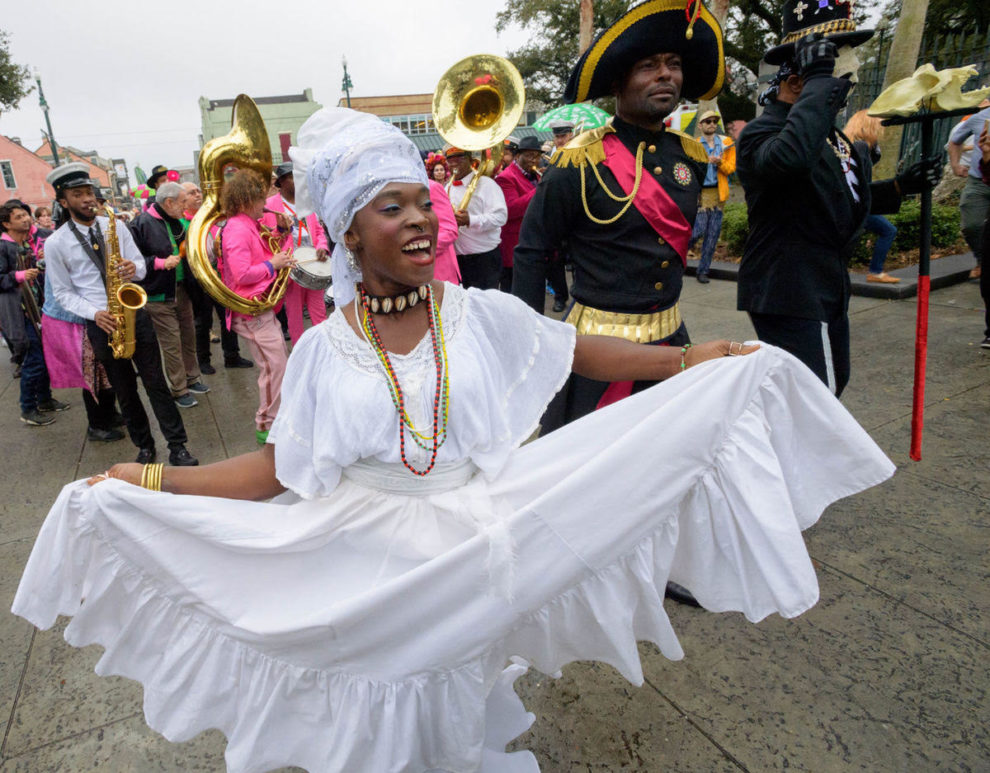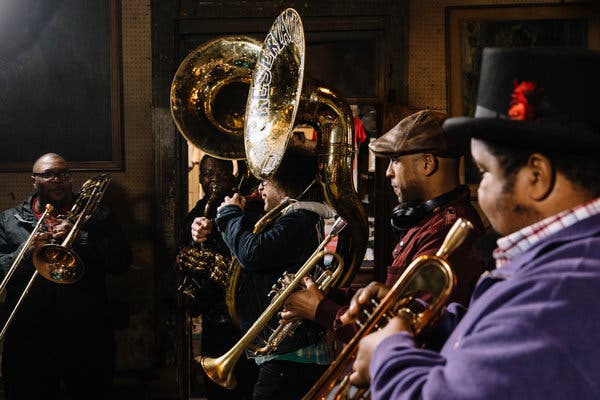I asked… really, I was only affirming a decision long, tall Peter had made: “so you coming out this year!” Meaning, in the way we talk amongst ourselves in New Orleans, he is going to be in the streets dancing in a suit that he sewed himself. A half-finished patch sat on his SUV’s back seat, silently expressing that Peter was preparing his suit for Mardi Gras 2020 even though it was still the autumn of 2019.
Spying his handiwork, I knew immediately, Peter was dedicating himself to doing the cultural work some of us volunteer to do. Peter and I talked about the deeper aspects of masking. How a significant number of young men who would otherwise spend hours, days, and months fighting each other or doing similarly self-destructive acts, would literally consume days and nights hand sewing elaborate celebratory suits.
The majority of the revelers who traditionally come out only on Mardi Gras day and St. Joseph’s night, spend at least six months patiently hand crafting what they proudly wear. Constructing a beautiful suit kept them occupied doing productive work, absorbed in sewing. Yes, men, hand sewing.
Dudes and ladies, but especially the dudes, who otherwise might be engaged in nefarious actives, were dedicated to the needle and the thread. I say “especially the dudes” because they are the ones who fill up Angola state prison, the largest incarceration camp in the United States, and perhaps in the world. Yes, women go to jail too, to St. Gabriel’s between New Orleans and Baton Rouge, but relatively speaking, the majority of the women in our metropolis are invested in caring for their children and their families. But even they dance down the streets on Mardi Gras and at second line parades.

The paucity of women as major leaders in the Indian tradition is the downside of gender relations (another story for another time). The inequality must be recognized, even when the emphasis is on the dynamic beauty of masking Indian, that is the art of Mardi Gras in New Orleans, which has gender aspects, but also has significant international roots in Haiti.

Even though we often see each other, Peter had not told me beforehand that he was masking. It’s just what men like Peter do. They do not ask permission, or even acknowledgement, to do whatsoever they do. The Black New Orleans tradition requires no outside approval. If outsiders dig it, good. If they don’t, it doesn’t matter. This aspect of New Orleans–committed to being New Orleans regardless of what anybody or everybody else does–is key to both the longevity and the future of New Orleans culture.

When I saw this Krewe du Kanaval video, I immediately wanted to share it. I knew and had worked with tuba playing Ben Jaffe’s father, Allan, who many, many years before, moved to New Orleans, I believe it was from Pennsylvania or some place far, far away. Musician Allan Jaffe founded Preservation Hall, a venue in the French Quarter hosting traditional New Orleans music. Ben was carrying on, following, as the saying goes, in his father’s footsteps.

Krewe du Kanaval was just a vibrant manifestation of the multi-ethnic and multi-generational celebration of New Orleans culture including a specific focus on the Haitian roots of Crescent City culture. A culture promoted by people such as Ben Jaffe, and especially by people like Peter. People, whom the majority of folk worldwide who love and celebrate New Orleans do not know by name. People who spend half the days of their lives, patiently putting together, bead by tiny bead, colorful costumes that are symbolic flags they fly, celebrating the pride and serious beauty of this city they call home.
Whether or not I run across Peter singing and dancing on Mardi Gras day, doesn’t matter. Why? Because, once again in our common vernacular: I know you Peter.
Whether or not I see you, I know you going to be out there prettily dancing down the street on Fat Tuesday.
“I know you Mardi Gras” and all that that way of being means, has meant to millions, and will always mean, well into our future.
